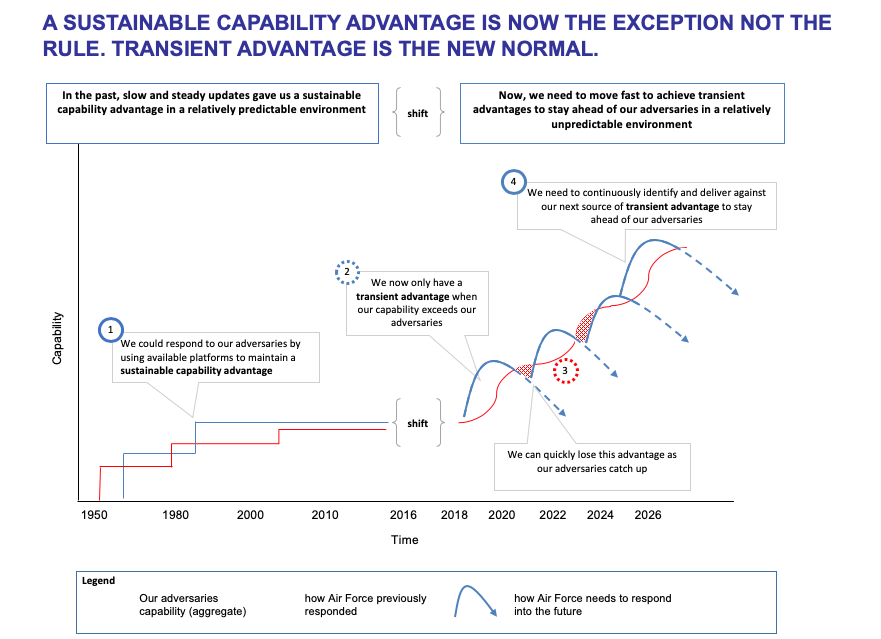By Robbin Laird
One of the changes facing the emergence of the kill web force is recognizing that it is already here.
The current situation reminds one of Molière’s famous line spoken by his main character in his play on social relations in 18th Century France: “My faith! For more than forty years I have been speaking prose while knowing nothing of it, and I am the most obliged person in the world to you for telling me so.”
As we build out an integrated distributed force, terms which have been used in the previous legacy military operation environment, like C2, networks, ISR and software, take on very different meanings, and the legacy versus the kill web ways to talk about operations are also very different, but the terms look apparently the same, when they are not.
Software is a good case in point.
Our team has highlighted the importance of software upgradeability changing the nature of the modernization process of core platforms.
But seen within a platform disguises the true impact of being able to kill web wide innovations and modernizations which a new approach to code writing allows.
We have seen beginnings generated by new platforms like the Wedgetail, the F-35 and the P-8/Triton dyad, but these are just beginnings which lay down a way ahead.
Where we are headed is in a direction which could yield significant operational advantages whereby code re-writing is driven by operations and operations by training, and training driving development and looping back again into operations.
An aspect of this strategic shift is highlighted in the graphic at the beginning of this article which highlights the strategic opportunity to position one’s forces for transient software advantage.
Recently, Lt. Sean Lavelle, a part of the P-8 Navy team, discussed one aspect of change driven by the impact of software upgradeability as a strategic shift in a podcast with Eric Lofgren.
According to Lofgren:
I was pleased to speak with Navy Lieutenant Sean Lavelle on the Acquisition Talk podcast. He is the founder and lead of the iLoc development team, which rapidly deploys valuable software capabilities to the Navy’s P-8 fleet. During the episode, Sean describes how P-8 aviators took it upon themselves to code new applications that could solve hard problems with software rather than pencil and paper. One application reduced reporting errors by 90 percent.
Sean provides a compelling vision of the future where operators also take on duties as software developers or product managers.
This doesn’t require everyone to have coding skills. The P-8A’s organic software team only has six rotating developers. Sean argues it is better to have many users involved in defining the business logic with a small team of software developers rather than a large software team with little access to user input.
The result is a continuous process where knowledge from the military operators can quickly get embodied in software and deployed to the entire fleet. Sean calls this “software-defined tactics,” and it’s a compelling concept indeed.
One of the many benefits is that it decreases the burden of training as operators are constantly involved in small changes. This is in contrast to the large and infrequent software drops from contractors, where increased capability often comes at the expense of increased complexity. It usually takes 3 or 4 years, for example, to train a P-8 tactical coordinator.
However, with the iLoc tools, a trainee of 6 months can reach a level of proficiency that used to take two or more years. Agile in-house software development vastly decreases complexity at the same time in generates new capabilities, allowing the U.S. military to scale much more rapidly in the event of conflict with a great power.


